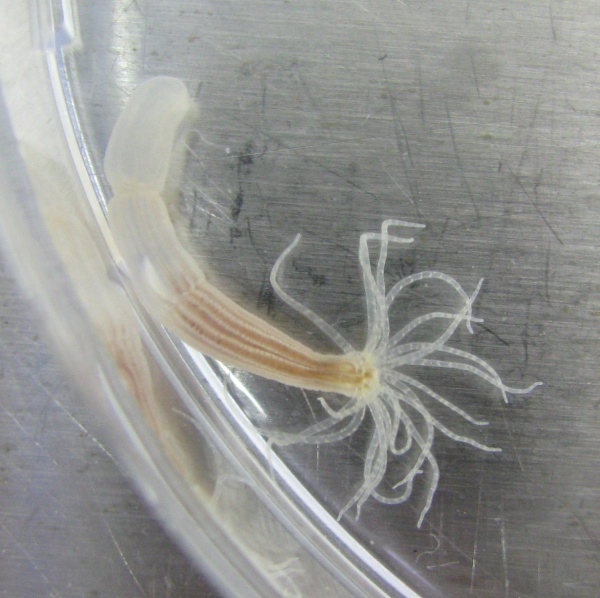Facts About Starlet sea anemone
The starlet sea anemone, a captivating member of the Edwardsiidae family, is native to various coastal regions including the eastern United States, southeastern England, the western U.S., and Nova Scotia, Canada. These anemones favor shallow, brackish waters and are commonly found in coastal lagoons and salt marshes. They typically bury their slender bodies in mud, showcasing only their tentacles above the surface. Sequencing of their genes has rendered them invaluable to scientific research. Despite this, they are classified as "Vulnerable" in the wild by the International Union for Conservation of Nature (IUCN).
Visually distinctive, the starlet sea anemone features a bulbous base and a column that ranges from less than 2 cm to approximately 6 cm in length. The column is often coated in mucus, which traps sediment particles, giving it a gritty texture. Atop the column lies an oral disk encircled by elongated, slender tentacles. The anemone itself is translucent and colorless, but it frequently exhibits white markings and banding on the tentacles, enhancing its unique appearance.
The habitat of the starlet sea anemone is quite diverse. They are found along both the eastern and western coasts of North America—from Nova Scotia to Louisiana on the east coast, and from Washington to California on the west coast. Additionally, they inhabit certain areas of the UK. These anemones thrive in brackish ponds, lagoons, ditches, and salt marsh pools with minimal water flow. They adapt to a wide range of salinities, typically burying themselves in silt or sand, with just their tentacles protruding.
Ecologically, the starlet sea anemone is often abundant and preys on a variety of small organisms. They themselves face predation from species such as the grass shrimp, Palaemonetes pugio. Reproductive methods vary by location: along the U.S. east coast, sexual reproduction is predominant, whereas in southern England, certain parts of the U.S., and Nova Scotia, asexual reproduction is more common.
In the realm of research, the starlet sea anemone has proven to be a treasure trove of insights, particularly in genetics, evolutionary biology, and developmental processes. Their simple tissue structure and genetic similarities to vertebrates make them outstanding model organisms. Studies have shown that they share certain gene sequences with higher animals, especially those involved in development. This has made them invaluable for understanding the evolution of body plans and the development of complex organisms.

 Ireland
Ireland